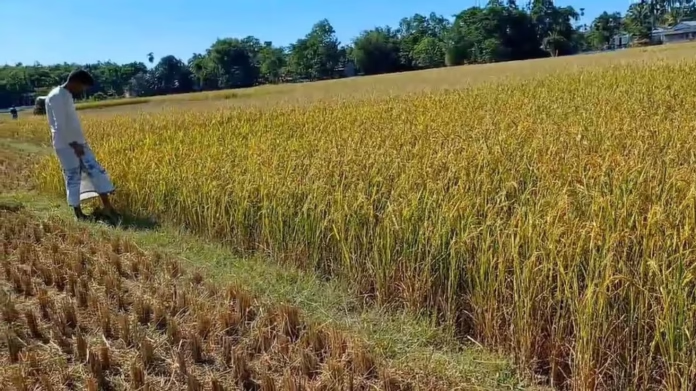Farmers in Tripura’s Bishalgarh sub-division under Sepahijala District have begun reshaping their agricultural practices by turning once single-crop fields into fertile farmlands yielding crops throughout the year. This transition has not only increased productivity but also significantly improved the socio-economic condition of farming households. By shifting from mono-cropping to a three-crop rotation system, the cultivators have ensured better use of land, time, and water resources.
Local farmers initiated the change under the guidance and encouragement of agricultural officers and state-supported programs promoting sustainable farming. As climate patterns continue to challenge traditional cropping cycles, many realized that their long-standing dependence on a single seasonal harvest exposed them to financial vulnerability. Now, farmers cultivate three different crops in rotation across a single year, adapting to seasonal changes and market demands.
The change in strategy has yielded visible results. Where once paddy alone dominated the farmlands, farmers now plant a mix of pulses, oilseeds, and vegetables in addition to rice. This move helps prevent nutrient depletion in the soil and offers resilience against crop failure. The improved cropping pattern has increased household incomes and has reduced the need for seasonal migration in search of alternative work during lean agricultural periods.
Farmers like Sujit Debnath from Kalikhala village have expressed pride and satisfaction with the transformation. He now grows paddy in the kharif season, followed by mustard in the rabi season, and summer vegetables in the third phase. His family’s annual income has nearly doubled within three years. Many farmers in the surrounding areas have echoed his success, stating that three-crop farming has brought them more food security, greater confidence in farming as a livelihood, and improved nutrition at home.
The Department of Agriculture has provided critical support through soil testing, training camps, and timely advice on pest control and fertilization methods. Officials ensured that farmers received quality seeds and information about the right sowing windows and harvesting timelines. Farmers welcomed this institutional support, which they said made the leap from traditional farming less intimidating and more informed.
Water availability posed a challenge in the early days of transition. Since traditional single-crop cycles often relied on monsoon rain alone, the demand for water grew with the introduction of multiple crops. To solve this, farmers invested in low-cost irrigation pumps and rainwater harvesting pits. With the state’s support in constructing minor irrigation channels and check dams, water usage became more manageable.
The introduction of vegetable cultivation in the third phase has made a significant difference. Farmers sell surplus produce in local markets, bringing daily cash flow and more market interaction. The visibility of local farmers has grown, with buyers and vendors from neighboring districts reaching out directly to them. Local cooperatives have also begun to form, helping farmers manage bulk marketing, reduce transport costs, and negotiate better prices for their goods.
Women in farming families have also stepped into more active roles. They participate in sowing, harvesting, and even marketing the produce. For many families, this change has not only improved household incomes but also strengthened gender roles within their communities. With more income in hand, families are sending children to better schools and are investing in health and home improvements.
As more farmers join this movement, the sub-division’s agricultural output has seen an overall boost. The success stories are encouraging officials to consider expanding similar initiatives across other districts of Tripura. With the rise of sustainable multi-cropping, experts believe that the region will continue to strengthen its food security and rural economy in the years ahead.
The transformation of Bishalgarh’s farmland marks a critical milestone in Tripura’s journey toward agricultural self-sufficiency. With persistent state support, innovative farming methods, and community determination, farmers are proving that even the most traditional fields can bloom with fresh possibilities.




